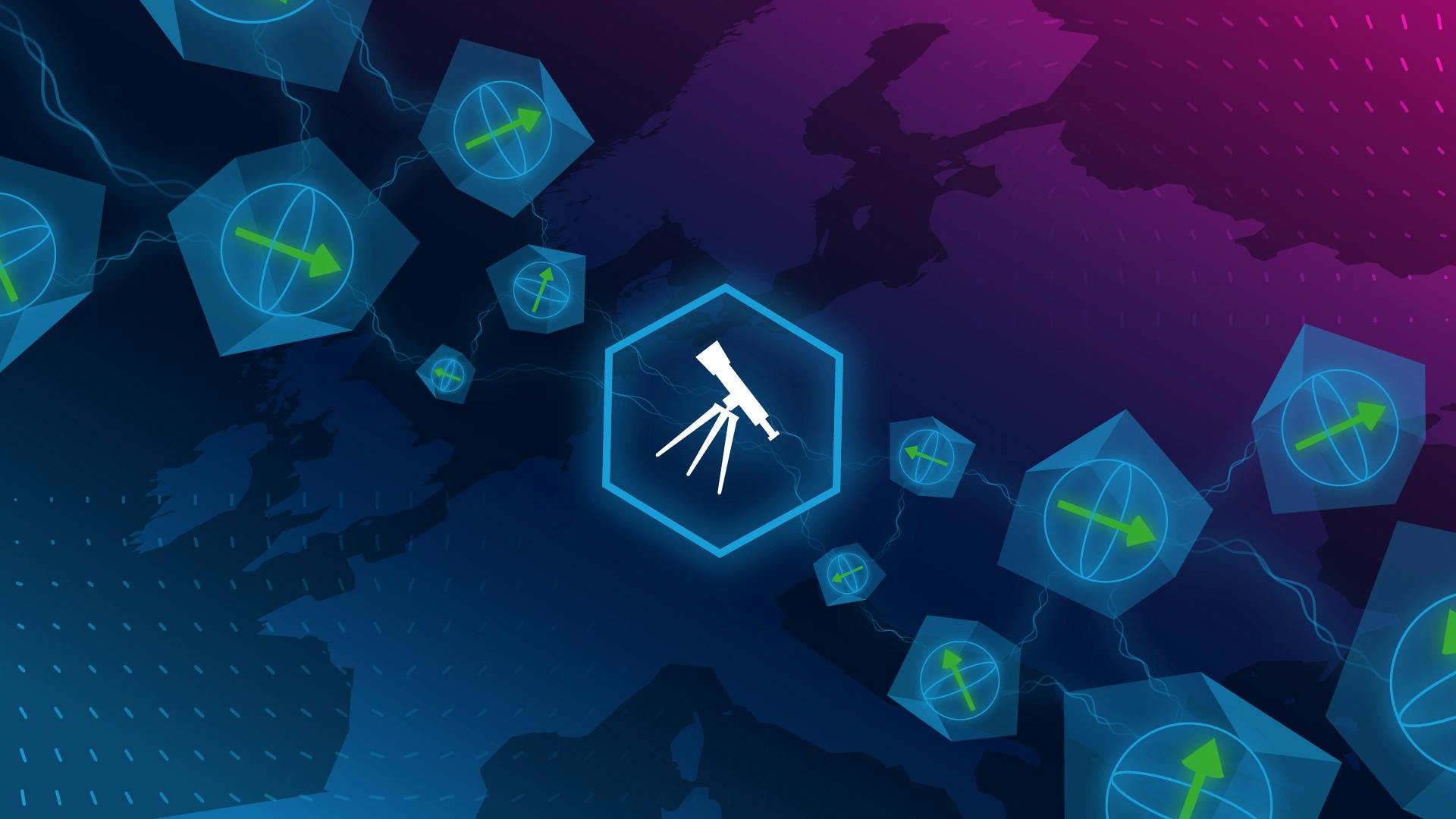Improving Scientific Instruments
Enhancing clock synchronisation
A quantum internet is expected to revolutionise the world as we know it with far reaching implications from healthcare and scientific research through to applications that are inconceivable to us today. Improvements to current technology and scientific instruments are among the envisioned advances.
Global positioning system (GPS)
Whenever you open ‘Maps’ to find your favourite restaurant or share your location with your friends, you are using the renowned global positioning system (GPS). This system also lets you track your order on services such as Deliveroo, and businesses use GPS in cargo-carrying vehicles. GPS is already ubiquitous in forestry, agriculture, wildlife tracking and hobbies such as running, but a quantum internet would bring with it considerable further benefits, expanding applications still further.
How it works
GPS is a satellite-based navigation system that relies on atomic clocks for its operation. To find your location on Earth, a receiver (for example, in your phone) measures the time taken for a signal to arrive from four or more GPS satellites. Using this duration and the known speed of the signal (speed of light), the receiver calculates its distance from these satellites, and thus determine its location on Earth. These calculated locations are sometimes off by a few metres, and deviations in satellite timing precision and synchronisation compromise accuracy.
Quantum communications come into play
Quantum communication technology is predicted to improve synchronisation, allowing GPS to pinpoint your location with much higher accuracy—theoretically down to 15 centimetres. Combining GPS with quantum communications could therefore pave the way for navigation systems with very high timing and position accuracy. Other applications could also benefit, such as energy and telecom networks.
Quantum-enhanced telescopes
Space exploration, with access to the secrets of deep space, is enabled by huge radio telescopes at different locations on earth observing the same part of the sky. The larger the distance between telescopes, the better they can resolve two closely spaced objects in the sky. Ideally, radio telescopes should be on opposite sides of the Earth, or even placed on satellites on opposite sides of the Earth. Proper operation requires accurate synchronisation of local radio telescope clocks over long periods of time, which becomes more challenging as the distance between them increases.
The mysterious quantum entanglement could uncover the mysteries of space
Quantum entanglement can be used to establish an instant connection between distant points. Quantum-connected telescopes would allow distant telescopes to operate in unison, operating as a single giant telescope capable of gazing deeper into space than ever before.
Gravitational waves detection
Gravitational-waves detectors would also benefit from improved synchronisation from quantum communication. Predicted by Albert Einstein in 1916, gravitational waves are generated by massive energetic events in the universe, such as colliding neutron stars. According to Einstein’s theory, these waves manifest as wiggles in space-time, and travel through the universe like ripples in a pond. Measuring gravitational waves can provide essential insights into the creation of the universe and the life cycle of galaxies, validating Einstein’s theories, but the space-time wiggles are tiny—less than ten billionth of a metre—making them hard to detect.
Measuring ripples in the fabric of the universe
Because of how small they are, it took nearly a century after Einstein’s prediction before instruments were made sensitive enough to detect gravitational waves. In 2015, the laser interferometer gravitational wave observatory (LIGO) was the first to detect gravitational waves. The LIGO has two large interferometers located thousands of kilometres apart to ensure that local vibrations at each site can be ruled out.
Unravelling the secrets of the universe with quantum
To verify that a detected event is caused by a gravitational wave, scientists compare the measurements from the different sites. Signals that differ between sites are disregarded, while identical signals that occurred at both sites at the same time are considered. Therefore, timing synchronisation between the various detectors is crucial for proper operation of the LIGO system. Currently, synchronisation is maintained using atomic clocks and a GPS system. Using quantum communications to connect the various LIGO detectors could lead to improvements in synchronisation and thus significantly enhance the operation of LIGO.
To confirm that a detected event is caused by a gravitational wave, scientists compare measurements from the different sites. Only identical signals that occur at both sites at the same time are considered. Timing synchronisation between various detectors is therefore crucial for the LIGO system. Atomic clocks and a GPS system are currently used, but quantum communications between various LIGO detectors could improve synchronisation and significantly enhance results.
Related publications
- Komar, P. et al. A quantum network of clocks. Nature Physics 10, 582–587 (2014). https://doi.org/10.1038/nphys3000
- Gottesman, , Jennewein, T. & Croke, S. Longer-baseline telescopes using quantum repeaters. Physical Review Letters 109, 070503 (2012). https://doi.org/10.1103/PhysRevLett.109.070503

